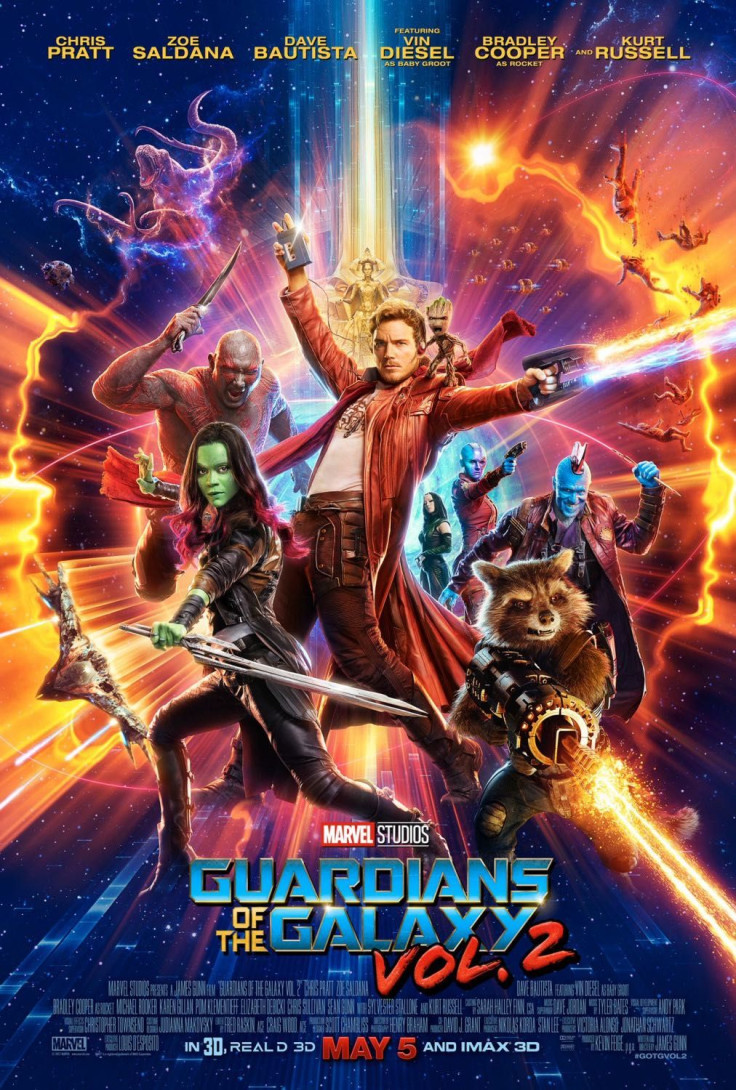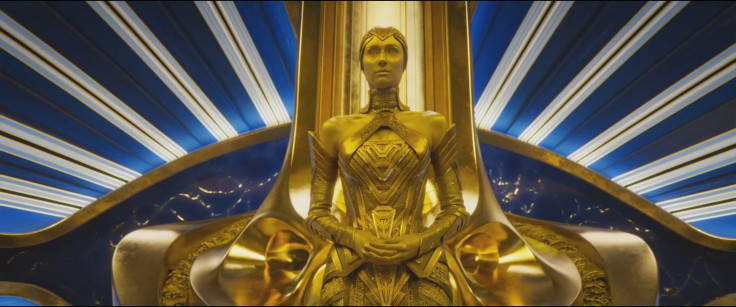A poster accompanying the new Guardians of the Galaxy Vol. 2 trailer embodies the same aesthetic and spirit of Trailer #3 (and presumably the movie): cereal box colorful, winkingly nostalgic, tacky as a VHS box. And there’s no half-measures in it, no mistaking Peter Quill’s (Chris Pratt) pose — thrust forward like a figure skater, with arms up in a flashy finisher — for anything serious. Michael Rooker’s Yondu’s dopey smile, right at you, captures everything Guardians of the Galaxy Vol. 2 aspires to be.
You can see the same goofy splendor all over the new Guardians of the Galaxy Vol. 2 trailer too (above). There’s the blue-and-gold tableau of Ayesha (Elizabeth Debicki) and the Sovereigns, an imperious race pulled straight from Flash Gordon or The Incal. Giant video game guns spew multiple colors. Not once is space a cold and black void: every system of any consequence in the Marvel universe is backed by a nebula. The first Guardians of the Galaxy was uniquely colorful in a landscape of orange and blue, color-graded-to-oblivion blockbusters, but it looks like Vol. 2 raised its own bar to keep up with the new blockbuster palette in bombastic competitors like Kong: Skull Island and in-house aesthetic stretches, like the psychedelic Doctor Strange.

It seems the further we get from Earth, the more colorful life can be. Compare Guardians of the Galaxy to Captain America: Civil War and the difference in not only color, but tone, is obvious. It might come down to color grading, but it seems to be indicative of the entirely different moral universe space-faring sci-fi inhabits. With the Captain America movies in particular, there’s a connection to real-world politics that manifests in several ways. The Winter Soldier is loaded with D.C. thriller mainstays, like the collaborationist senator (Garry Shandling whispering “Hail Hydra” is to be cherished) and thinly veiled parallels to real-world debates over American militancy and pervasive surveillance. That this hewing to geopolitics would be accompanied by a dour color palette makes sense: the world is a confusing, dangerous and frightening place.
The distancing of space allows Guardians of the Galaxy to get away with actions and events that would feel discordant or unseemly on Earth. Compare reactions to the urban destruction at the end of Man of Steel to the destruction of Nova Corps at the end of Guardians of the Galaxy, a spasm of violence and mass death that dwarfs most other violent moments in movie history (outside of Roland Emmerich disaster movies like The Day After Tomorrow). The common factor is loss of life. But move death far enough away and paint it brightly and it ceases to have the same value. Death becomes denatured and fantastical.
The color palette of Guardians of the Galaxy Vol. 2 isn’t just 80s whimsy, but a code fired through the eyes into the mind. The code tells us that with this one we don’t have to look for political parallels. We don’t have to think about anything but the shining moment. The code unlocks permissions to enjoy violence in its most untethered form. It’s an aesthetic that tells us to laugh along with Rocket after he fires that cloud of darts into the Ravagers’ faces. That’s fine, fun needs no excuse. And violence, for whatever species-wide reason, can be fun. But no matter how many light-years we travel or how neon the blood, all stories are human and all stories of death and destruction are about human death and destruction.
Late in this third Guardians of the Galaxy Vol. 2 trailer they visit a world of bubbles and stained glass, bathed in sunset and primary colors. They share a moment of joy: this world is beautiful. Will Captain America ever get a moment like that?
Guardians of the Galaxy Vol. 2 arrives in theaters May 5.


















